Sprinklers in the forest: How lake water can protect northern Minnesota properties from fire and how they might fail
15 years after federal dollars funded sprinkler programs in northern Minnesota their success relies on local maintenance.
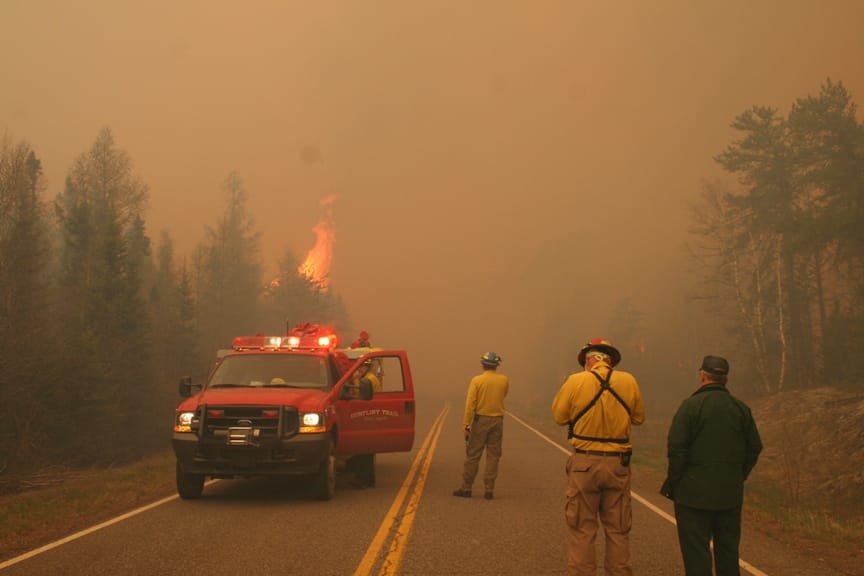
Dan Baumann remembers walking out of the smoky backwash of a 2007 wildfire and into the perimeter of a cabin wildfire sprinkler system. The structures were untouched, and there were chickadees at the feeder.
“It was like walking into a moisture bubble,” said Baumann, the former deputy fire chief for the Gunflint Trail Volunteer Fire Department. “It’s cool and wet. Like going from a sauna to a cold plunge.”
Baumann and his crew were fighting a monstrous blaze that would be named after its origin: the Ham Lake Fire. Started by an unattended campfire, it roared across the Gunflint Trail corridor in mid-May, just days after ice-out, before crossing the international border into Canada’s Quetico wilderness.
It was the fire they had planned for.
“This was the test,” Baumann said. Would the sprinkler systems work by pumping lake water and broadcasting it from rooftop-mounted poles, dousing the buildings and ground?
The 1999 “Boundary Waters blowdown,” a derecho with 100-mile-an-hour winds, had flattened nearly a half-million acres of the Boundary Waters Canoe Area (BWCA). In one afternoon, a 40-mile-long, 10-mile-wide swath of forest was made to lay on the ground like a path of stacked matches aimed at the Gunflint Trail.
The idea for a wildfire sprinkler system was based on what wildfire firefighters have always known: Fire is an opportunist that follows the path of least resistance. If the forest floor — thick with fallen trees, branches, and underbrush — could be made wet, it would increase humidity and create a cooler microclimate.
Three million dollars in Federal Emergency Management Agency grants had helped place wildfire sprinkler systems on more than 100 cabins, lake homes, and resorts. But this fire was high-intensity with 120-foot flames — a fast-moving, wind-driven fire.
In the end, the fire ate around 140 structures, only one of which had a sprinkler system. The structures with sprinklers survived.
For a time, it seemed property owners and emergency managers found a solution. With a relatively small investment, much of it covered by federal grants, homes could be saved. Entire resorts and summer camps could survive a fire.
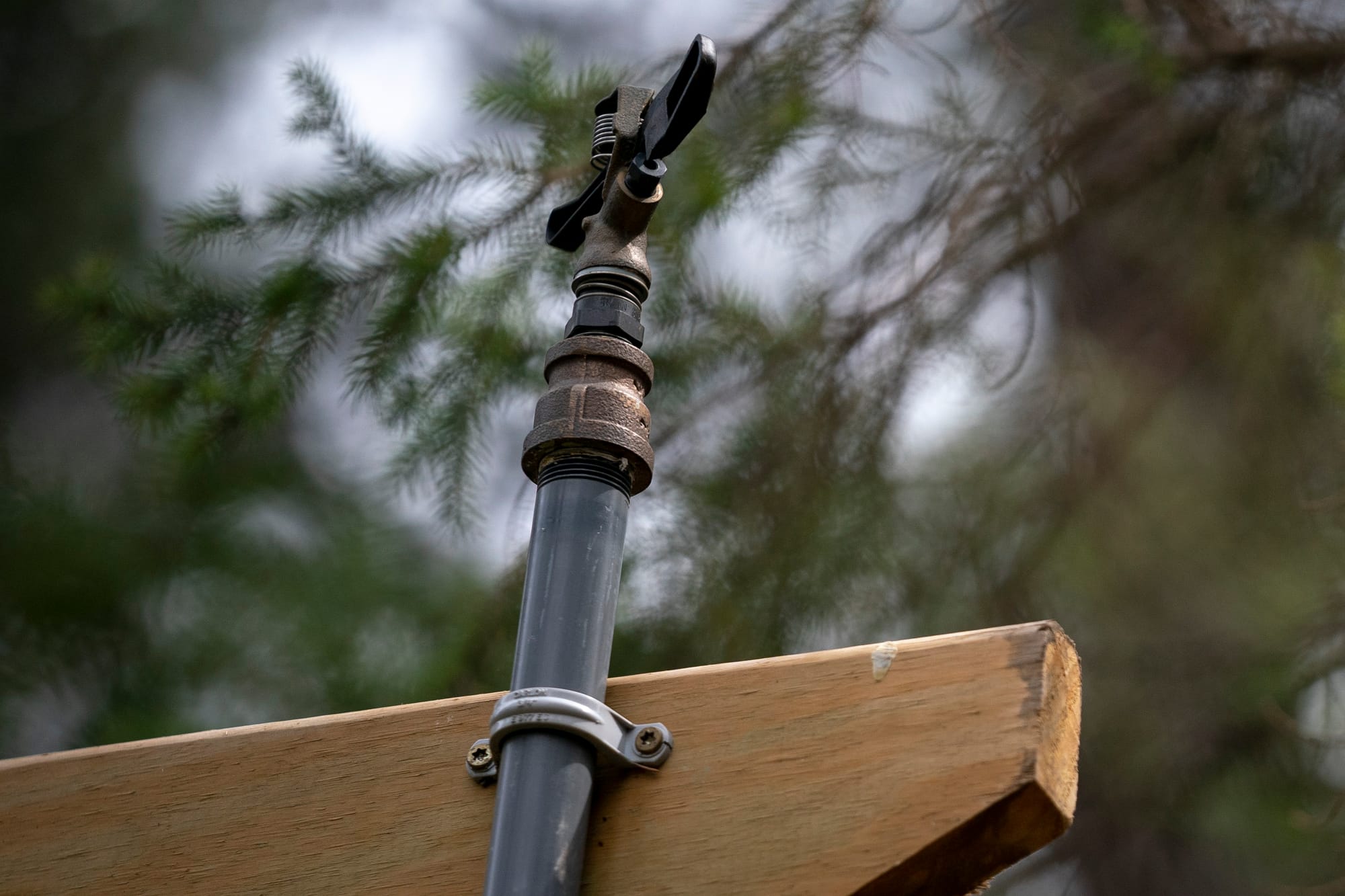
Reporters published stories, the University of Minnesota wrote a paper endorsing sprinklers that energized the wildfire community, and skeptics had to admit that overwhelming evidence pointed to a successful experiment.
Yet, across the forest, some firefighters remain unconvinced. It’s not the effectiveness of the systems – no one argues that. Instead, it’s the unreliability of unmaintained systems that pose a danger.
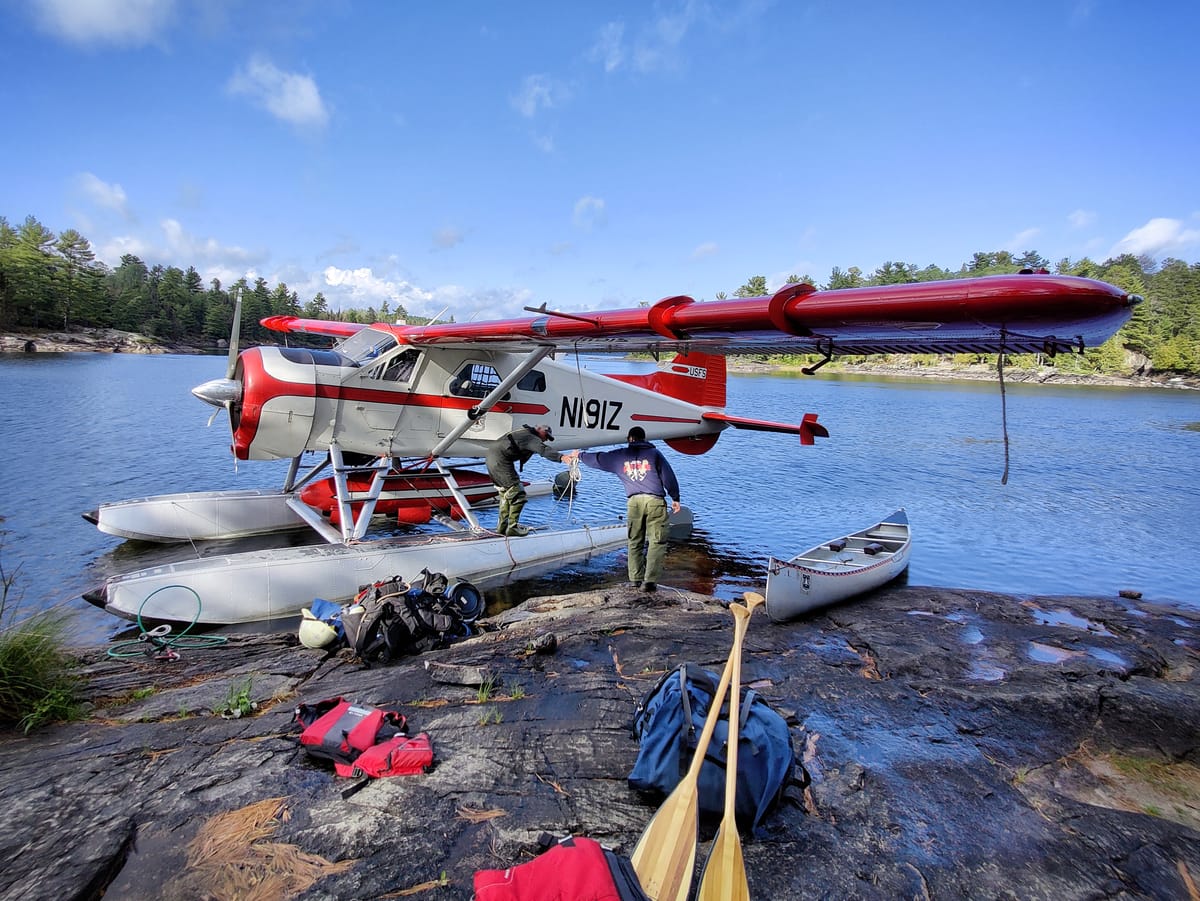
For residents and cabin owners wanting new systems, cost is the barrier. Matching FEMA grants that funded up to 75% of sprinkler costs are long gone. Today, a new system for a 1.5-acre lot and cabin can run up to $15,000.
For those with installed systems, keeping them running can be challenging. Physical limitations, technical challenges, and a lack of a trained workforce impact the reliability and even functionality of the systems.
“It’s a good idea, not an answer,” Baumann said of sprinklers. “They’re only as good as the landowners and communities make them. When it’s part of the bigger picture? Yes. But it takes work, leadership, and training.”
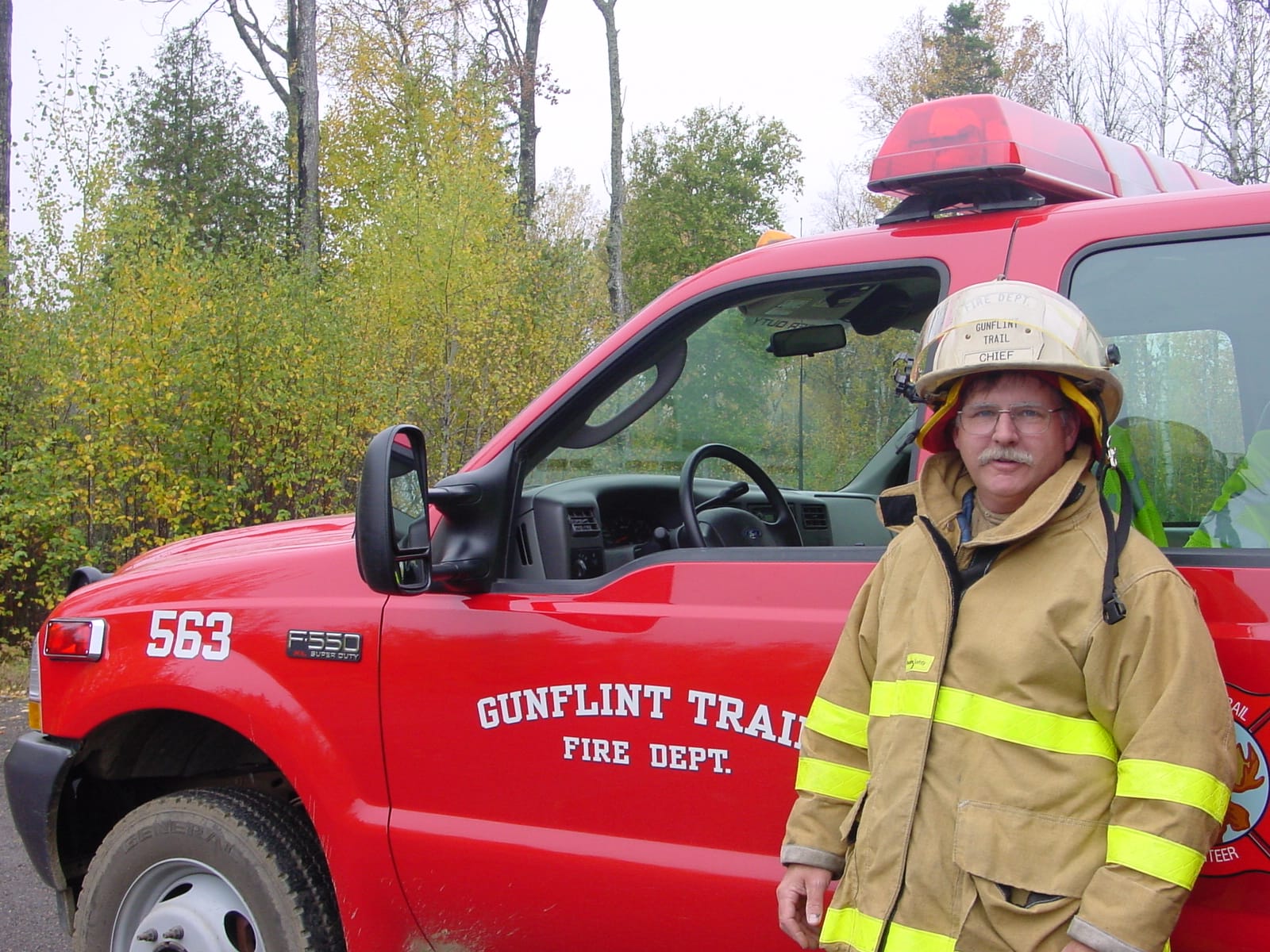
A forest on fire
Superior National Forest is a three-million-acre behemoth, the largest national forest in the eastern United States. It is the southernmost edge of the great boreal forest ecosystem, laced with thousands of lakes in and out of the BWCA. It is also a forest ripe for fire.
While attitudes about fire management have changed, the effects of more than a century of fire suppression have not. Huge tracts of land within the Superior National Forest have not burned in more than a century, creating a dangerous, fuel-laden landscape.
Climate change is an accelerant. In northern Minnesota, daily average minimum temperatures, December to February, have increased by 7.3 degrees from 1895 to 2021. The forest is simply hotter, with shorter winters, drier summers, and longer fire seasons.
The eastern spruce budworm, a native to the coniferous forest, has killed hundreds of thousands of balsam. Millions of dead trees pack the forest like standing Roman rockets, adding up to more than 600,000 affected acres, which is bigger than the state of Rhode Island.
“The Superior National Forest probably has the highest fire risk in the eastern U.S.,” said Dr. Homer Wilkes, the U.S. Department of Agriculture’s Under Secretary for Natural Resources and Environment.
His visit to the forest in March of this year could not have been more timely.
The day he spoke in Duluth, temperatures approached record highs. The radios carried on the hips of the USFS fire managers in the audience buzzed and crackled – fires were erupting as Wilkes spoke.
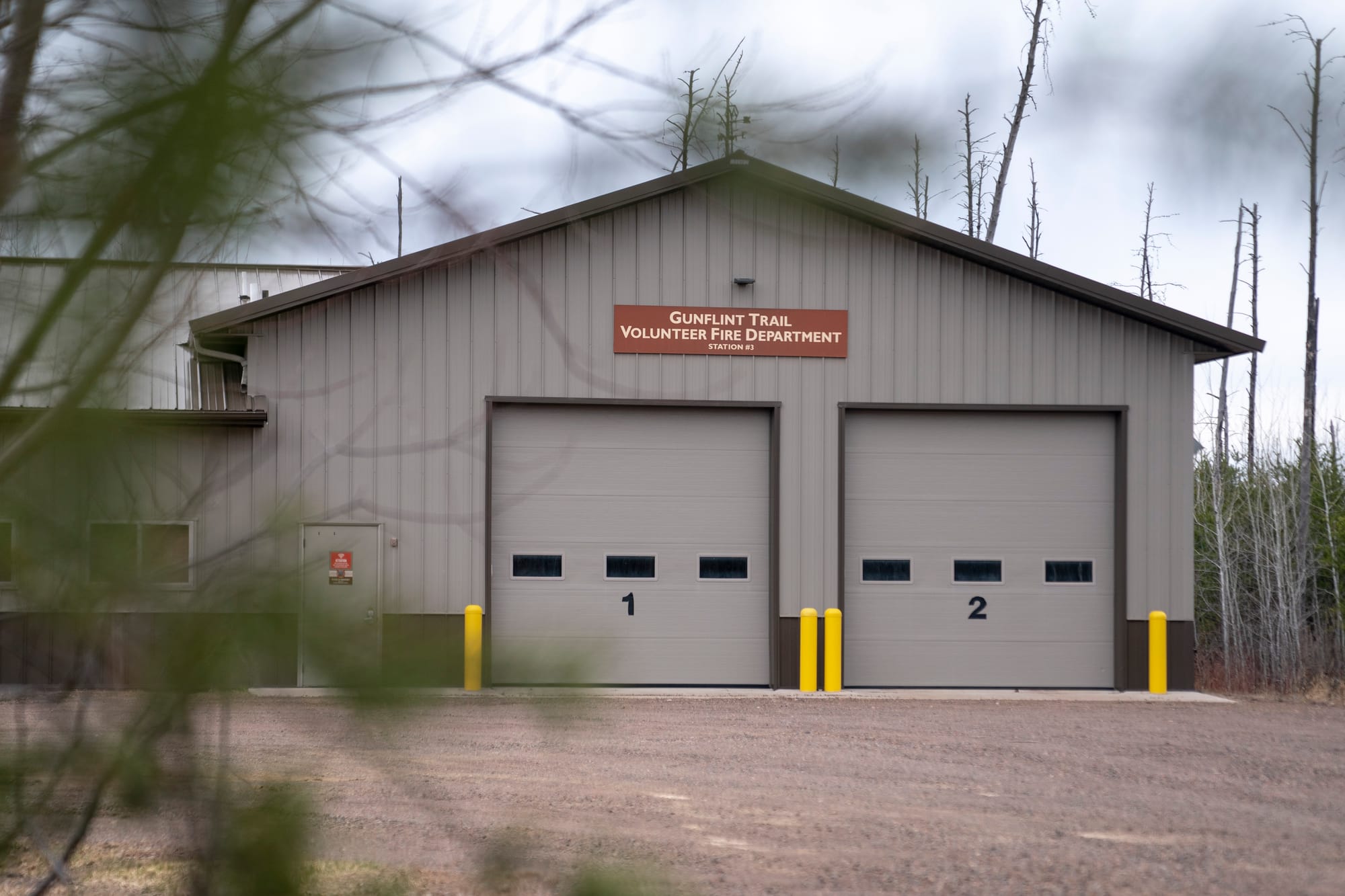
Meet the sprinkler guys
In the days after the 1999 derecho, Gunflint Trail resident George Carlson considered his newly-built home, now directly in the path of an inevitable wildfire. He began making calls, contacting a few Canadians who were experimenting with wildfire sprinklers.
“It was the late 1990s, and there was no internet up here. As a corporate recruiter, I knew how to find experts. They told me that two inches of precipitation in 24 hours could change everything,” he said. “So I put it together.”
Carlson wrangled commercial irrigation parts and converted a gasoline pump to propane. The design, tweaked and refined over 20 years, still stands. The uniformity of area pumps meant that firefighters could train on one pump and be ready to work at any property. To this day, the design specifications are available to the public on the Gunflint Trail Volunteer Fire Department website, updated to reflect current best practices and recommendations for purchasing parts.
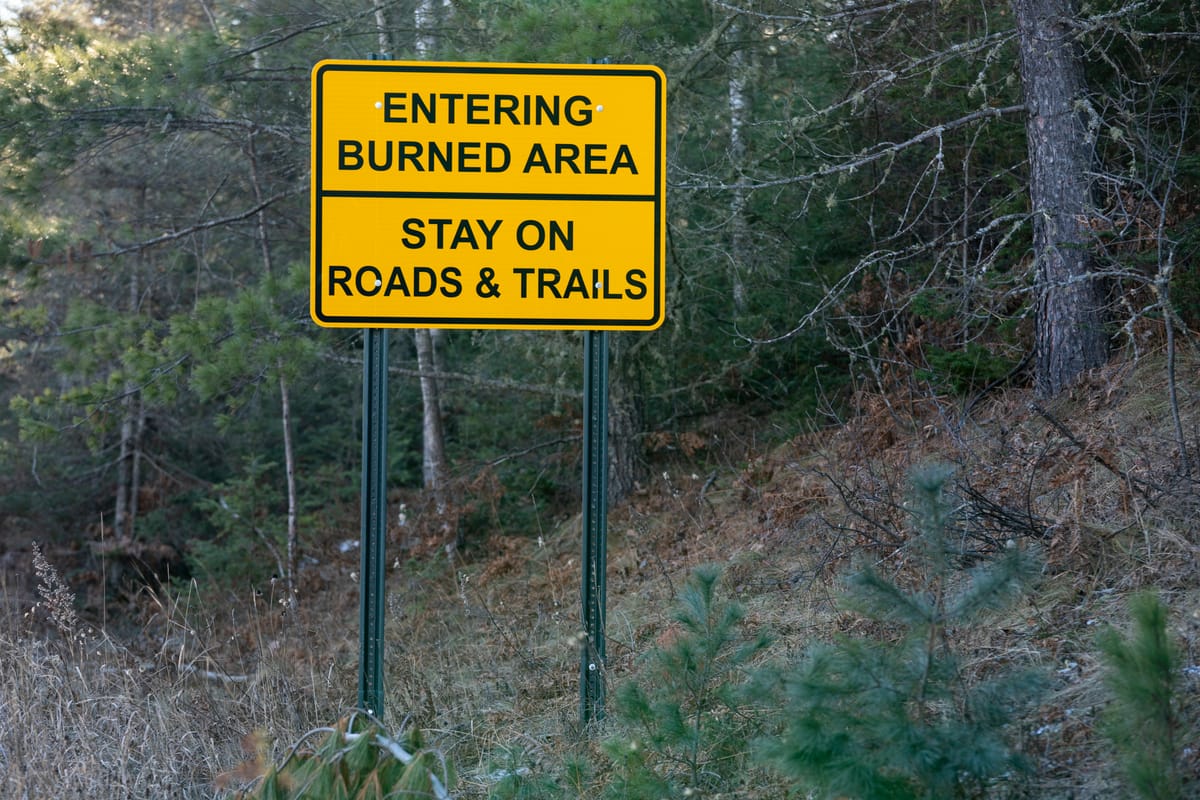
After 20 years, Carlson is looking to sell the company that he founded, Wildfire Protection Systems. It remains the only known wildfire sprinkler contractor in all of northern Minnesota. Carlson estimates he serves around 260 Northeastern Minnesota properties, maintaining existing systems and, less frequently, installing new systems.
The “other sprinkler guy,” as Cook County locals refer to him, is Mike Valentini. He can be found only by word of mouth. “I’m plenty busy,” said Valentini, who services another couple of hundred sprinklers and who, at 74, is also a retirement candidate. “But the market is different than before. Without FEMA grants, new installations have fallen off. And a vast number who want them, have them.”
“It’s a tricky situation,” said Valentini, noting that in a county where the median home price is now nearly a half-million dollars, sprinkler installations can be impossible for locals with lower incomes.
“Still, Cook County is probably the best-protected county in the U.S., from a sprinkler standpoint,” he said.
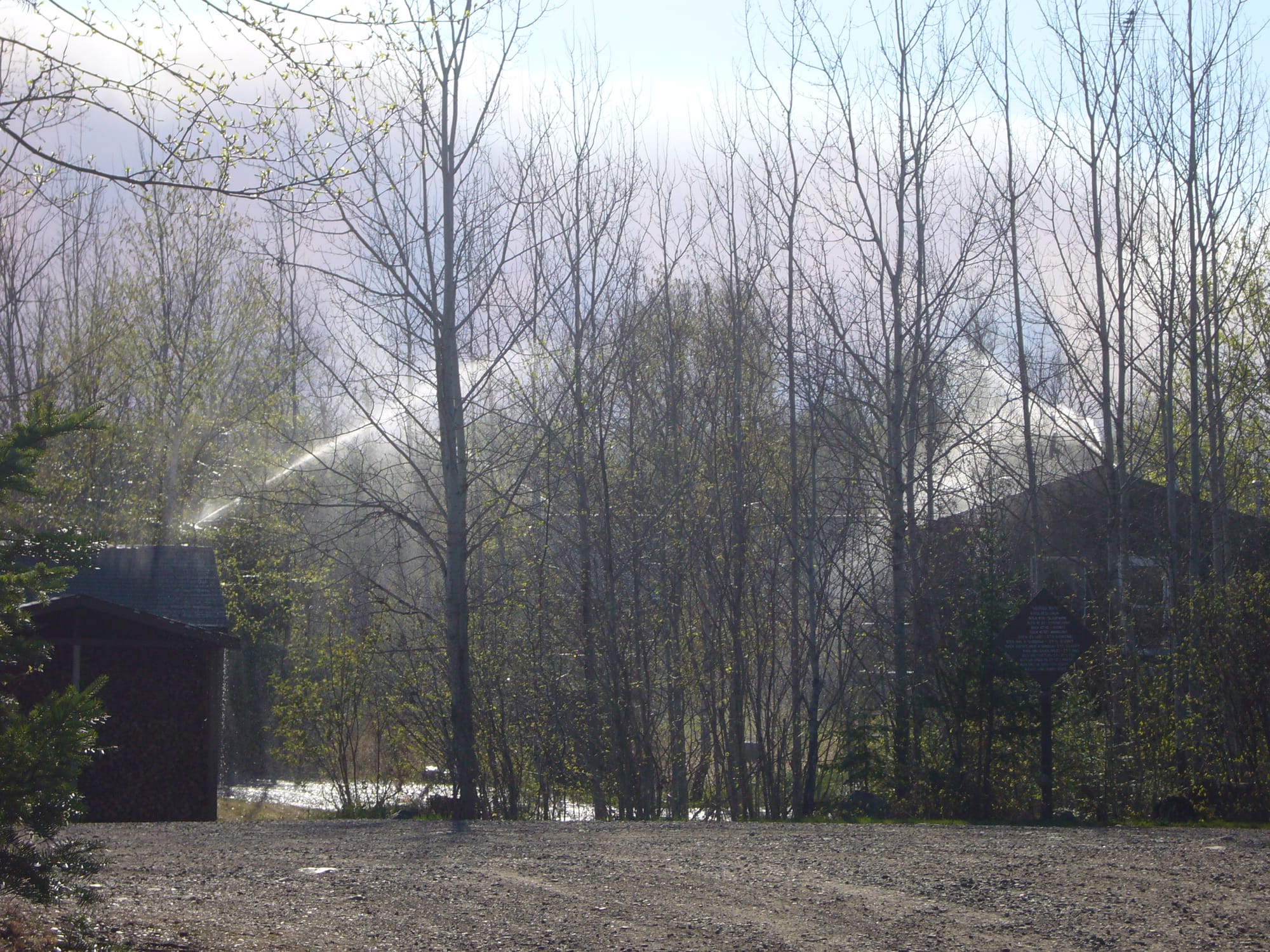
Assuming the sprinklers don’t work
On the west end of the Superior National Forest, Morse-Fall Lake township Fire Chief Ted Krueger manages a very different situation. His service area is vast, east and north of Ely, extending to the BWCA border, crossing two counties, including the small town of Winton. Rather than just one road into the wilderness, like the Gunflint on the east side of the forest, he contends with three: The Echo Trail, the Kawishiwi Trail, and the Fernberg Road.
After 22 years of working structure fires and wildfires on the edge of the wilderness, he’s become practical about what works and what doesn’t.
“I don’t care if there’s a sprinkler or not,” Kreuger said flatly. “They work — if and when they’re maintained. And I don’t see it happening. I have to assume, for everyone’s safety, that they don’t.”
Kruger’s experience with wildfire sprinklers has left him frustrated. “People put them in, but they have to maintain them,” he said, explaining that he’s even had calls asking when the fire department is going to come to turn on the sprinkler systems. “A lot of cabin owners are here for the wilderness, but they don’t get it. I can’t even get them to cut down one tree so our emergency vehicles can access their property.”
Outside of Ely, Chuck Zeugner would love for his professionally installed sprinkler system to work. Zeugner’s experience, like many on the west side of the forest, is that there is no local help. “It’s getting harder to deal with it each year. I’m 65 and not much of a mechanic. I’d like a local service," he said.
Another resident, Tanney Wilson, agreed, saying her system came with the cabin. “I had a vague idea of what it was, but only now are we understanding what this requires of us each year. I’m not sure this is in my wheelhouse, but I’m figuring it out," she said.
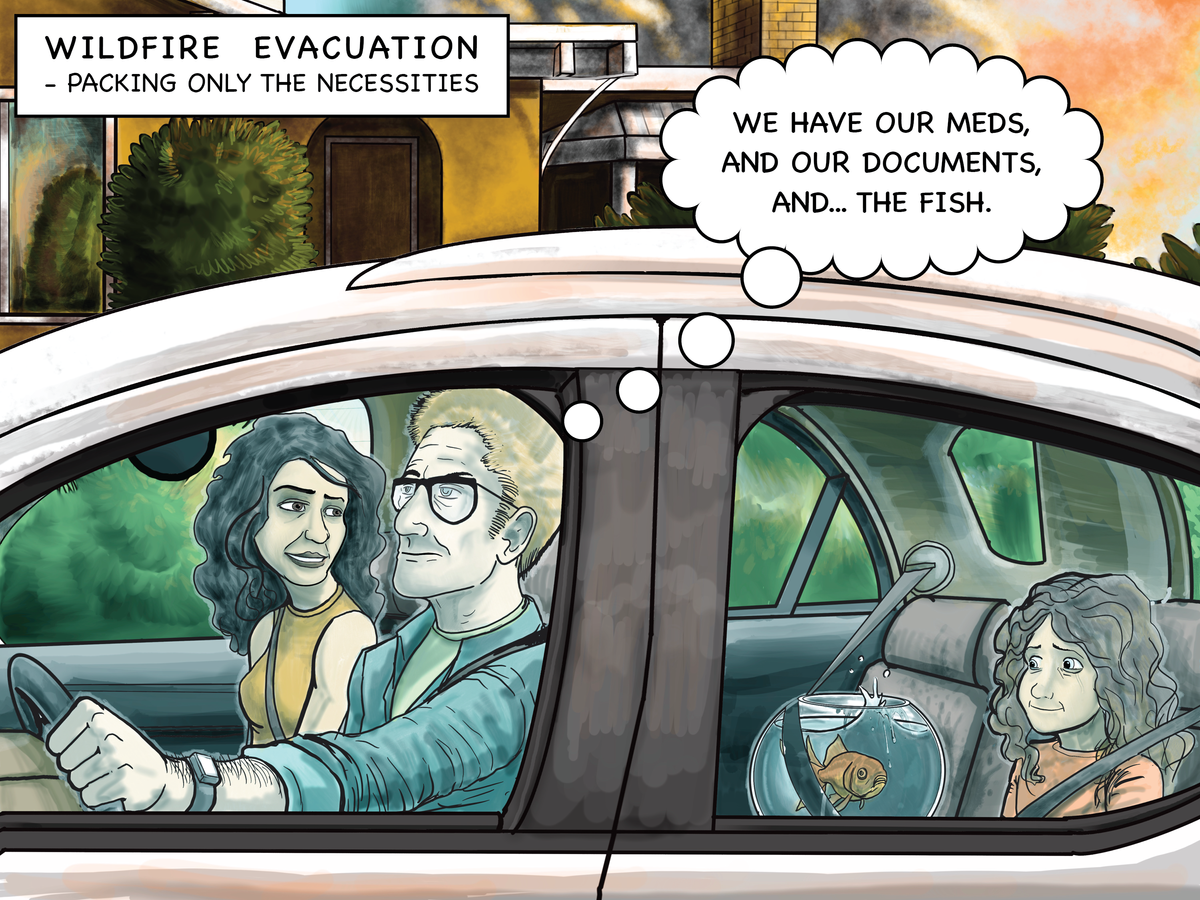
Where sprinklers work best
The Gunflint Trail community is now so organized that cabin sprinkler systems are marked by special yellow road signs with a fire hydrant icon at the end of driveways, alerting emergency workers to their presence. Green signs tell firefighters that there are adequate pull-outs every 500 feet for fire equipment. Neighbors have organized to form response teams, strategizing plans to start one another’s systems.
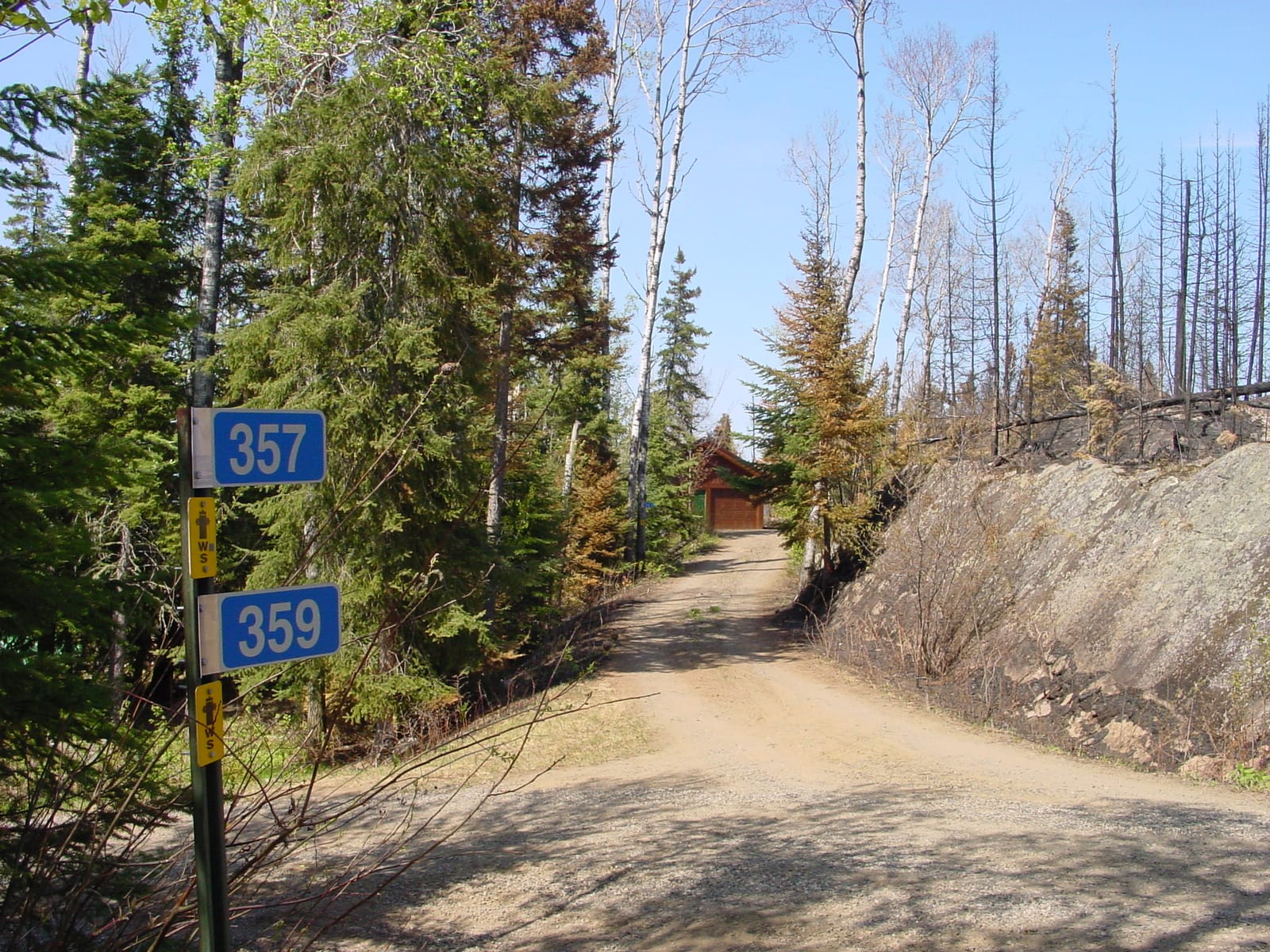
“The Ham Lake Fire united people,” Baumann said. “We built community centers at our fire halls, on purpose, to create community. It costs money. People baked pies if they couldn’t afford to give. Three new fire halls came to fruition with a half-million dollars raised locally.”
The Gunflint Trail Fire Department has three trailered sprinkler systems of their own, some of which were used to contain the Lutsen Resort fire that destroyed the much-loved North Shore destination in February.
“We’re committed to sprinklers. The fact of the matter is that they work. Remarkably so,” said Valentini. “But we’ve been tested by fire over here on this end of the forest. We have learned the hard lessons.”
Back in Ely, Fire Chief Krueger knows it could be better. “The Gunflint people have had enough experience with fire,” he said. “People around here don’t get that yet.” He points to a few small groups that have recently formed to discuss and work on small neighborhood-based projects.
“They’re renting chippers and appointing road ambassadors,” he said. “It’s happening, and that’s a step in the right direction. But people have to understand that sprinklers are only part of the picture.”
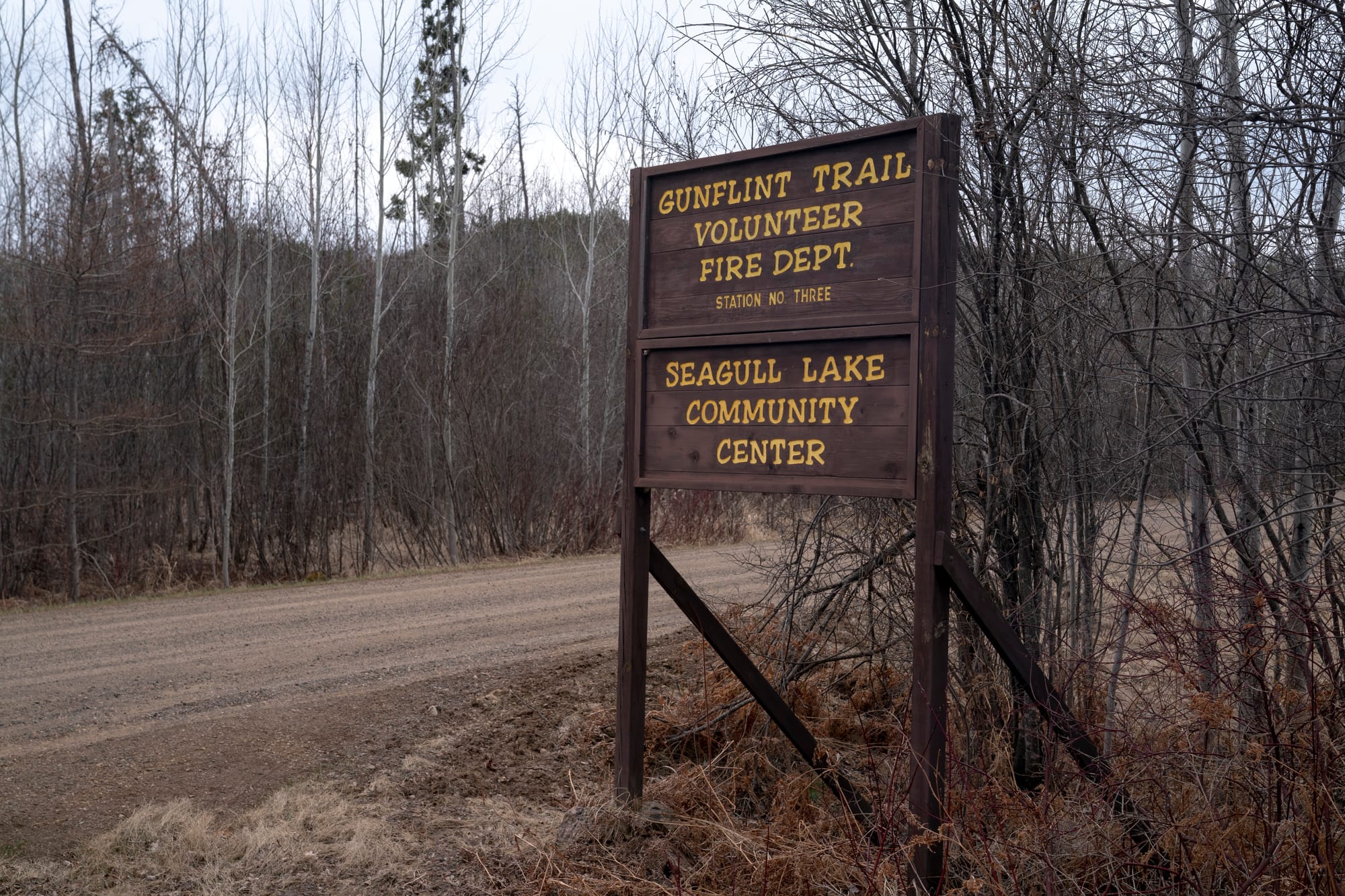
This article was edited by Becca Most and Nora Hertel and fact checked by Nora Hertel and Jana Studelska. It is Part IV in Project Optimist's months-long series about wildfires in Minnesota. Read the start of the series here. And stay tuned for more stories and details on in-person events.
